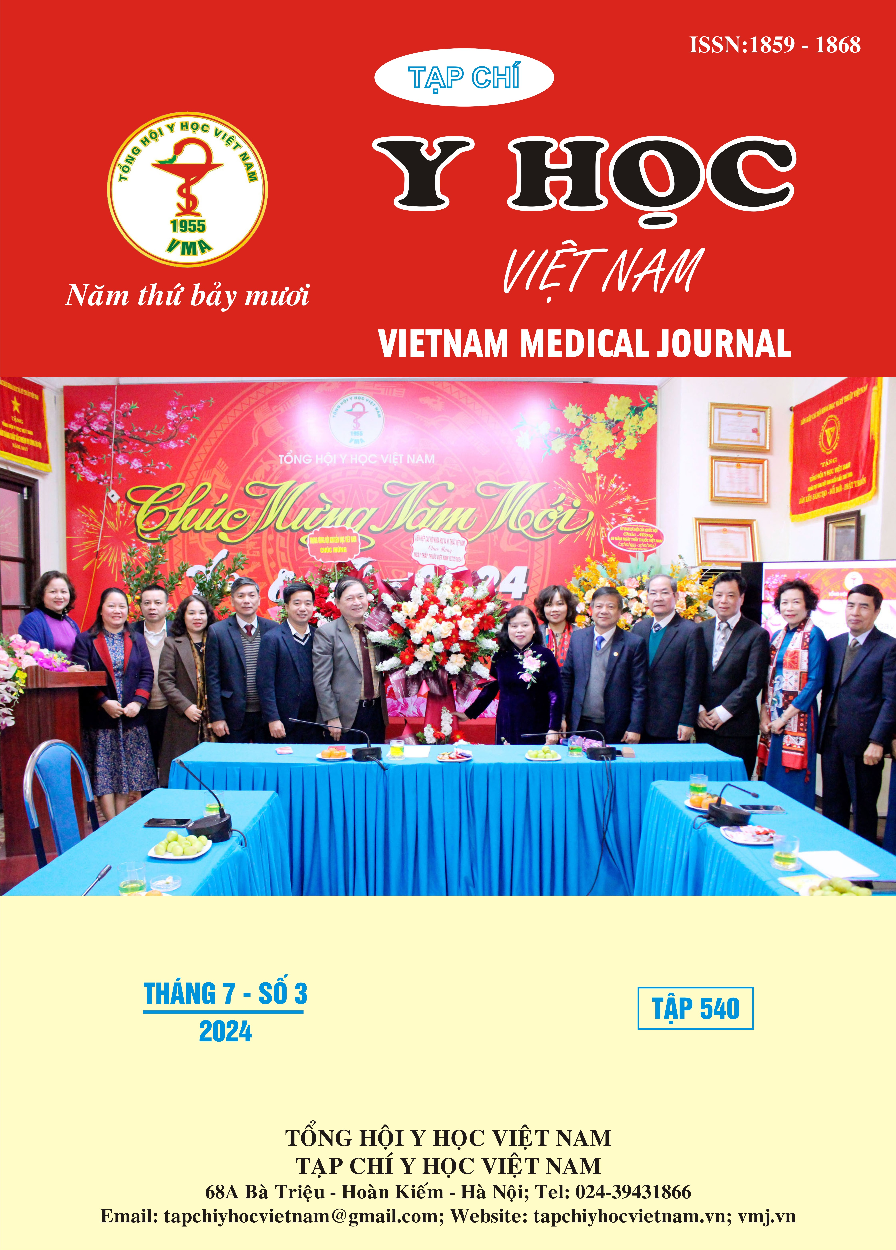ĐÁNH GIÁ MỨC ĐỘ NHIỄM KHUẨN VÀ KIỂM TRA TÍNH ĐỀ KHÁNG KHÁNG SINH CỦA VI KHUẨN GÂY BỆNH PHÂN LẬP ĐƯỢC TỪ MICROPHONE - DỤNG CỤ HỖ TRỢ DẠY HỌC TẠI MỘT SỐ TRƯỜNG ĐẠI HỌC TẠI TP.HCM
Nội dung chính của bài viết
Tóm tắt
Đặt vấn đề: Sử dụng micro không hợp vệ sinh là một trong những nguyên nhân phát tán dịch bệnh lây truyền qua đường hô hấp do nhiễm K.pneumoniae, S.pneumonia, S.aureus, P.aeruginosa - những tác nhân này vào trong khoang miệng, qua tuyến nước bọt và truyền sang microphone khi sử dụng, tiếp tục truyền bệnh từ người này sang người khác. Mục tiêu: Đánh giá mức độ nhiễm khuẩn và kiểm tra tính đề kháng kháng sinh của vi khuẩn gây bệnh phân lập được từ microphone - dụng cụ hỗ trợ dạy học tại 3 trường đại (ĐH) học ở tp. HCM. Đối tượng, phương pháp nghiên cứu: Microphone - dụng cụ hỗ trợ dạy học tại 3 trường ĐH khảo sát, phương pháp mô tả thiết kế cắt ngang. Kết quả: Khảo sát 255 mẫu microphone, nuôi cấy, phân lập vi khuẩn trên môi trường thạch máu, thu được kết quả 55,69% (142/255) mẫu nhiễm khuẩn, tỷ lệ nhiễm lần lượt tại 3 đại học 1, 2 và 3 là 58,54% (48/82); 66,94% (83/124); 22,45% (11/49). Trong đó có (95,07%) 135/142 mẫu nhiễm Staphylococci, 4,93% (7/142) nhiễm Pseudomonas sp, không có mẫu nhiễm S. pneumoniae và K. pneumoniae. Trong các mẫu nhiễm Staphylococci phân lập được 5,19% (7/135) mẫu nhiễm S.aureus, 45,93% (62/135) nhiễm S.epidermidis, 48,89% (66/135) nhiễm Staphylococci khác. Ba trong bảy chủng S. aureus phân lập được đề kháng đồng thời với 4 loại kháng sinh Azirthromycin, Erythromycin, Gentamycin và Penicillin đồng tỷ lệ (28,57%) hai chủng kháng Clindamycin (28,57%), 1 chủng kháng Ciprofloxacin (14,28%) và một chủng kháng Tetracycline (14,28%). Pseudomonas sp hầu hết nhạy với tất cả các kháng sinh, chỉ có 1 chủng kháng với Gentamicin. Kết luận: Mức độ nhiễm khuẩn của microphone là 55,69%, Trong đó có 5,19% mẫu nhiễm S.aureus và 4.93% mẫu nhiễm Pseudomonas sp. Chưa phát hiện K.pneumoniae và S.pneumoniae. Ba chủng S. aureus kháng đồng thời 4 kháng sinh Azirthromycin, Erythromycin, Gentamycin, Penicillin. Hai chủng kháng Clindamycin, 1 chủng kháng Ciprofloxacin, một chủng kháng Tetracycline. Hầu hết Pseudomonas sp. nhạy với kháng sinh, 1 chủng kháng với Gentamicin
Chi tiết bài viết
Từ khóa
Microphone, tỷ lệ nhiễm khuẩn, tính kháng kháng sinh của vi khuẩn
Tài liệu tham khảo
2. Bộ Khoa học và Công nghệ. TCVN 11039- 6:2015, Phương pháp phân tích vi sinh vật – phần 6: Phát hiện và định lượng S.aureus bằng kỹ thuật đếm khuẩn lạc. 2015.
3. Bộ Y tế. Hướng dẫn thực hành kỹ thuật xét nghiệm vi sinh lâm sàng. Nhà xuất bản Y học, Hà Nội. 2017.
4. Trương Thiên Phú, Lê Phương Mai, Ngô Minh Quân, cộng sự. Đề kháng kháng sinh của các vi khuẩn thường gặp trong nhiễm khuẩn hô hấp dưới tại Bệnh viện Chợ Rẫy năm 2021. Tạp chí Y học dự phòng. 2022; 32 (4): 112 – 119.
5. Phẩm Minh Thu, Mai Hồng Hải Yến, Nguyễn Ngọc Quế Anh, Đinh Thị Út Quyên, Bùi Ngọc Anh Thư, Lưu Lệ Khanh. Thực trạng ô nhiễm và tính kháng kháng sinh của Streptococcus pneumoniae, Staphyloccocus aureus và vi nấm thường gặp trên dụng cụ giảng dạy – Microphone tại cơ sở 2 – trường Đại học Văn Lang”. Tạp chí Y học dự phòng 2022, Tập 32, số 8, tr. 154 – 160.
6. Dan Reynolds and Marin Kollef, “The Epidemiology and Pathogenesis and Treatment of Pseudomonas aeruginosa Infections: An Update”, Review article 2021; 81, p. 2117–2131.
7. https://bvdkquangnam.vn/index.php/tin-tc/y-hc-thng-thc/1333-kim-tra-vi-sinh-khong-khi, accessed: 18/4/2024.
8. https://www.who.int/health-topics/pneumonia (accessed: 23/04/2024)


